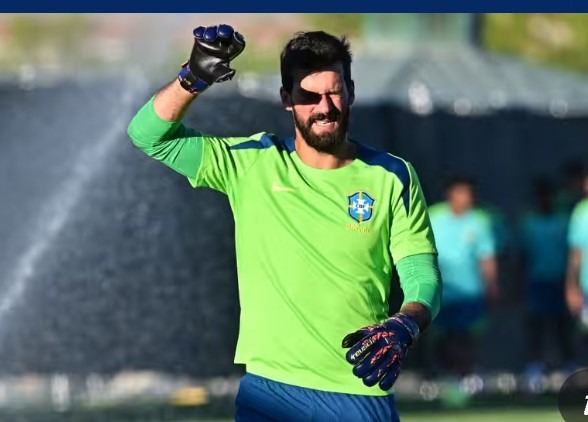2026 World Cup: Tackling Extreme Heat in Host Cities
Discover how the 2026 World Cup addresses extreme heat in 16 host cities. Learn about temperature risks, innovative stadium features like retractable roofs, and FIFA's $400 million cooling strategy to ensure fan safety. Stay informed with expert tips!
3/7/20253 min read


**🌍⚽ 2026 World Cup: Navigating the Scorching Challenge in the US, Canada, and Mexico**
*How Host Cities Are Tackling Extreme Heat to Protect Players and Fans*
The 2026 FIFA World Cup is poised to be a historic event, uniting 48 teams across 16 host cities in the United States, Canada, and Mexico. But beyond the thrill of the games, a pressing concern looms: **extreme heat**. With summer temperatures projected to soar, organizers face unprecedented challenges to ensure player safety, fan comfort, and event success. Let’s dive into the fiery details and solutions.
### 🔥 **The Heat Crisis: A Burning Issue for the 2026 World Cup**
The tournament’s June-July schedule coincides with peak summer in North America, where temperatures in cities like Dallas, Mexico City, and Kansas City could exceed **40°C (104°F)**. According to a 2025 *Climate Central* report, host regions may experience **20% more heatwave days** compared to previous decades due to climate change.
#### 🌡️ **Host Cities at Risk: Temperature Projections**
1. **Dallas, USA** ☀️
- Average June Temp: 36°C (97°F)
- Humidity: 65%, amplifying heat stress.
- Risk: The 2011 North American heatwave caused 200+ deaths here.
2. **Guadalajara, Mexico** 🌵
- Historic High: 41°C (106°F) in 2023.
- Challenge: Limited shaded infrastructure for fans.
3. **Toronto, Canada** 🍁
- Projected Temps: 34°C (93°F), a 15% rise from 2022.
- Concern: Rarely hosts summer events of this scale.
**Other High-Risk Venues**:
- Las Vegas (45°C/113°F in 2024), Houston, and Atlanta.
### 💔 **Health Risks: Players and Fans in the Danger Zone**
Extreme heat isn’t just uncomfortable—it’s deadly. During the 2014 World Cup in Brazil, **hydration breaks** were introduced after players collapsed mid-game. In 2026, risks include:
- **Heatstroke**: Core body temps >40°C can cause organ failure.
- **Dehydration**: A fan in Qatar 2022 required IV fluids after 30 minutes in 38°C heat.
- **UV Exposure**: Mexico City’s altitude (2,240m) intensifies sunburn risk.
**Vulnerable Groups**: Children, elderly attendees, and players with pre-existing conditions (e.g., asthma) face higher risks.
### 🛠️ **Mitigation Strategies: How FIFA and Hosts Are Cooling the Game**
FIFA’s “**Cool 2026**” initiative outlines multi-million-dollar plans to combat heat:
1. **Smart Scheduling** 🕒
- Matches moved to evening slots (8 PM local time) where possible.
- Avoid 12 PM–4 PM “danger window” in cities like Dallas.
2. **Stadium Innovations** 🏟️
- Retractable roofs in 60% of venues (e.g., SoFi Stadium, LA).
- Cooling zones with misting fans and free water stations.
3. **Player Protections** ❄️
- Mandatory 3-minute hydration breaks per half.
- Real-time “wet bulb” temperature monitoring to pause games if needed.
4. **Fan Safety Measures** 🧊
- Free sunscreen dispensers and shaded seating.
- Emergency medical teams stationed every 100 meters.
### 💰 **Economic and Logistical Costs: The Price of Staying Cool**
Adapting to heat isn’t cheap:
- **$400 million** allocated for cooling tech across venues.
- **15% increase** in ticket prices for roofed stadiums.
- Local businesses may lose revenue if fans avoid daytime activities.
**Controversy**: Critics argue funds should address long-term climate solutions, not temporary fixes.
### 🎉 **Fan Experience: Staying Safe While Soaking In the Fun**
Organizers urge attendees to:
- 🧢 Wear breathable clothing and wide-brimmed hats.
- 🚰 Drink 500ml of water hourly (free refill stations available).
- 📱 Use the official *World Cup 2026 App* for real-time heat alerts.
**Pro Tip**: Night matches in Vancouver (avg. 22°C/72°F) promise cooler vibes!
### 🌱 **Sustainability Goals: Can the World Cup Go Green Amid the Heat?**
The 2026 event aims to be the **“greenest World Cup ever”** with:
- Solar-powered AC units in 70% of stadiums.
- Carbon offset programs for travel emissions.
- Post-tournament donations of cooling equipment to local schools.
### 🏆 **Final Whistle: Balancing Passion and Precaution**
The 2026 World Cup will test humanity’s ability to adapt to climate change while celebrating global unity. As Dr. Maria Silva, FIFA’s climate advisor, notes: *“This isn’t just about sport—it’s about setting a precedent for future mega-events in a warming world.”*
By prioritizing health, innovation, and fan engagement, North America’s tri-nation spectacle could score a historic victory—against the heat.
**🔥 Key Takeaways**:
- 40°C+ temps threaten player performance and fan safety.
- $400M invested in cooling tech and medical resources.
- Night games, hydration breaks, and shaded zones are critical.
- Sustainability efforts aim to leave a positive legacy.
Let’s cheer responsibly—and stay hydrated! 💦⚽
